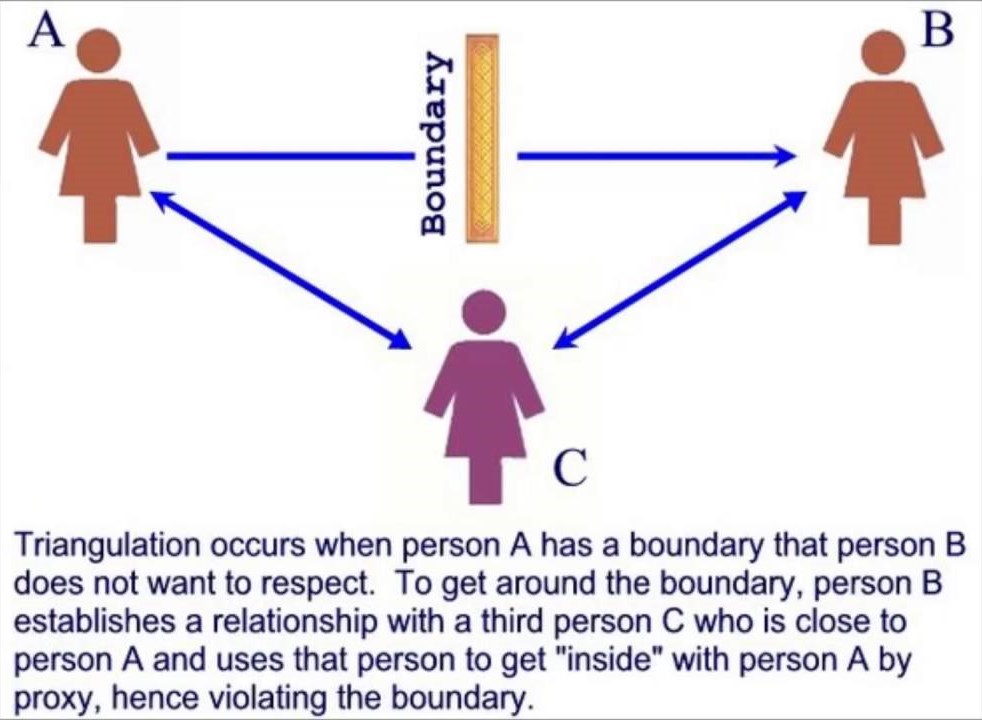August 2022

When a person is abused into reacting, it is the reaction that is talked about, not what the abuser did to cause it.
Dr. Darren F. Magee
Introduction
No, we are not talking about Tony Soprano or anything to do with organized crime. This is about your daily job at an average company. The dynamic involved is something I always took for granted, until I casually spoke about some of my stresses and challenges at work with my counselor Dr. David McDermott. He quickly responded, “You are a victim of mobbing. It is a form of emotional and psychological abuse. It won’t get better there.” He recommended I read Mobbing: Emotional Abuse in the American Workplace (Davenport, Schwartz and Elliot). What I discovered was eye-opening.
Mobbing is a type of bullying, but usually not overt and thus it is more difficult to detect and counter. What is worse, is that it can be effectively employed within the structure of most organizations without violating any rules or regulations of the organization. People in positions of power can mob at will with little or no consequences. Their behaviors are ignored, tolerated, misinterpreted or actually instigated at the company level as a deliberate strategy. Chances are good you don’t even know you are being mobbed. It is just taken for granted as normal corporate life, but the effects are anything but normal.
In the 1980s, Dr. Heinz Leymann coined the term “mobbing” when he discovered patterns of similar group abuse among adults at their workplaces. He researched this behavior first in Sweden and then brought it to public awareness in Germany. He investigated what he was told were “difficult” people in the workplace and determined that many of these people were not “difficult” to begin with. He found that the root of their behavior was not a character flaw that made them inherently difficult. What he found was a work structure and culture that created the circumstances that marked these people as difficult. Once identified as difficult, the company created further reasons for terminating them. This, Leymann identified as mobbing.1
Brad’s true story below is a common example of how mobbing occurs in corporate America.
The Setup
Brad was thirty minutes into a “blamestorming” meeting, as he thought of them. The official title was troubleshooting meeting, but that was just window dressing for the real reason, which was assigning blame for the previous evening’s system crash to some employee. The senior manager, Rose, was facilitating it and managers from various departments outside of tech were also present. Rose was gearing up to throw some tech employee under the bus to take the blame, but it was still unclear just who. This scenario had been replayed countless times already.
Rose had risen up through the ranks. Brad had worked with her years ago when they were peers. She had been a competent, empathic and sincere person back then. That had all changed over the years after she was promoted into management. She now spent most of her time in the rarified atmosphere of corporate leadership and had little to do with those who used to be her peers. It was a standing joke that she was too busy to meet with any of her employees, even meetings she herself had called. What bothered Brad the most about the new Rose however, is that she had developed a habit of not following through on commitments she made to those below her. She had left him hanging several times already by not providing resources, software or higher-level coordination. Each time, Brad had been left holding the bag as the responsible person for her failure to keep commitments.
“Have we identified the root cause of the failure?” asked Rose. Tim, the lead system administrator replied, “It was an expired API key for geolocating.” Rose, turned to Brad, all eyes following her. “Bradley, isn’t that the key we were informed six months ago would expire?” “Yes,” said Brad, “the one which I asked you to renew. You are the only one who has contact with the vendor and the only person in the department with purchase authority to buy a new one.”
“Why didn’t you remind me?”
“I did. Several times. We set up three meetings, all of which you cancelled.”
“Well, you should have expressed more urgency.”
“I informed you of the expiration date each time I contacted you. I’m not sure how else I could have communicated it more urgently.”
“So ultimately, it was something you failed to do.”
“No Rose, ultimately it was a needed resource you failed to provide me, despite my repeated requests. I’m not taking the fall for this one.”
Silence descended upon the room, punctuated by a few small gasps. Brad’s direct boss William jumped in, “We can take this off line, Brad. Let’s discuss what we need to do right now to move forward and make sure this doesn’t occur again.”
Was Rose the mob boss? No. While she was arguably a bad leader, perhaps an incompetent manager, maybe even somewhat toxic – she was not the mobber in this situation. It was William. He used what developed here as the setup to increasingly mob and control Brad over the next few years. Let’s see how this was done.
Mobbing Explained
Dr. Leymann identified five different categories of how a mobber abuses their victim. These are:
- Impact on self-expression and the way communication happens
- Attacks on their social relations
- Attacks on their reputation
- Attacks on the quality of their professional and life situation
- Direct attacks on their health
Examples of behaviors impacting these categories are:
| 1 st Category: Impact On Self-Expression and the Way Communication Happens |
| 1. Your superior restricts the opportunity for you to express yourself |
| 2. You are interrupted constantly |
| 3. Colleagues/co-workers restrict your opportunity to express yourself |
| 4. You are yelled at and loudly scolded |
| 5. Your work is constantly criticized |
| 6. There is constant criticism about your private life |
| 7. You are terrorized on the telephone |
| 8. Oral threats are made |
| 9. Written threats are sent |
| 10. Contact is denied through looks or gestures |
| 11. Contact is denied through innuendoes |
| 2 nd Category: Attacks On Their Social Relations |
| 1. People do not speak with you any more |
| 2. You cannot talk to anyone, i.e. access to others denied |
| 3. You are put into a workspace that is isolated from others |
| 4. Colleagues are forbidden to talk with you |
| 5. You are treated as if you are invisible |
| 3 rd Category: Attacks On Their Reputation |
| 1. People talk badly behind your back |
| 2. Unfounded rumors are circulated |
| 3. You are ridiculed |
| 4. You are treated as if you are mentally ill |
| 5. You are forced to undergo a psychiatric evaluation/examination |
| 6. A handicap is ridiculed |
| 7. People imitate your gestures, walk, voice to ridicule you |
| 8. Your political or religious beliefs are ridiculed |
| 9. Your private life is ridiculed |
| 10. Your nationality is ridiculed |
| 11. You are forced to do a job that affects your self-esteem |
| 12. Your efforts are judged in a wrong and demeaning way |
| 13. Your decisions are always questioned |
| 14. You are called demeaning names |
| 15. Sexual innuendoes |
| 4 th Category: Attacks On the Quality of Their Professional and Life Situation |
| 1. There are no special tasks for you |
| 2. Supervisors take away assignments, so you cannot even invent new tasks to do |
| 3. You are given meaningless jobs to carry out |
| 4. You are given tasks that are below your qualifications |
| 5. You are continuously given new tasks |
| 6. You are given tasks that affect your self-esteem |
| 7. You are given tasks way beyond your qualifications, in order to discredit you |
| 8. Causing general damages that create financial costs for you |
| 9. Damaging your home or workplace |
| 5 th Category: Direct Attacks on Their Health |
| 1. You are forced to do a physically strenuous job |
| 2. Threats of physical violence are made |
| 3. Light violence is used to threaten you |
| 4. Physical abuse |
| 5. Outright sexual harassment |
The majority of the actions in categories 1, 2 and 4 above are completely within the accepted behavior of a manager and cannot be declared workplace harassment or abuse.
The Spike
William called Brad in for a private meeting immediately after the troubleshooting meeting ended.
“You sounded pretty angry and out of control in there. Everyone noticed it. Rose asked me what was going on” [Brad would later discover that none of this was true. Several of the people attending the meeting stated that Brad sounded calm and in control. Moreover, Rose never broached the subject to William.]
“I wasn’t angry. I was just telling Rose that I wasn’t taking responsibility for her oversight. She does this a lot.”
“You did it in front of other department members. It should have been handled in private.”
“Then Rose should have brought it up in private.”
“I think we need to identify the root cause of these things that are triggering your anger, so that you can address them before they reach an unmanageable state and you explode again. I’m adding a goal to your annual performance plan to brainstorm possible causes of these triggers and how you can better address them. We will discuss these during our weekly 1-on-1 meetings. I think you will feel much better after you get this all resolved,” William said with a smile.
Brad and William
William had been Brad’s boss for several years. He was highly competent, easy going and had a reputation for putting out fires nobody else could handle. He said and did all the right things. He was very measured with his words and presented a quiet air of concern and helpfulness. He never appeared excited or agitated. He had a solution for everything, but there was something about him that made Brad uneasy and mistrusting. Some feeling in his gut that he could not quantify. Brad chalked it up to his general mistrust of managerial types and left it at that. He was very wrong. William was a wolf in sheep’s clothing.
Brad had been a high performer at the company for many years, quickly rising to a senior engineering position. He was praised frequently and received many company awards for achievement. He was acknowledged as an expert in his field and had both the respect and admiration of many people within the company. He had no desire to enter management and made that clear, focusing instead on adding value to various different engineering efforts. He had improved and revolutionized technical systems in several areas over the years.
All that stopped when William took over as Brad’s direct manager. There was nothing overt, it just quietly ended. William was friendly, amicable and seemed easy to work for, but nobody on the team ever received credit for anything. Conversely, William was named the company’s employee of the year. Nobody received promotions either. Both recognition and promotions had been plentiful before William became the team’s manager.
Brad was no longer looked to as the architect of solutions. Instead, a contractor was hired to do all the new work and Brad was required to support him. Any solution Brad brought to William was either dismissed outright or picked apart on points of process, rather than technical implementation. Where Brad had previously been the company’s go-to guy for implementing complex technology, he was now just a technical gofer.
Moreover, the company began acquiring more questionable and unstable systems against Brad’s recommendations. Over-priced and under-performing systems pushed aggressively by tech sales people, backed up by whatever contractor was calling the shots at the time. When these systems failed, often during the wee hours of the morning, Brad was the one pulled out of bed to address the issue and held accountable for the failure.
The 1-on-1
“How are the anger issues coming,” was the first statement out of William’s mouth as he began his weekly 1-on-1 meeting with Brad. “Have you made progress identifying any triggers?” William never addressed anything technical during these meetings, only process and soft skill topics that were a very tiny part of Brad’s job description. Brad’s “anger issues” was his new favorite.
Brad bristled inside. It was like being asked, “Did beat your wife less this week?” What authority or qualifications did William have to play counselor? It felt like a gross violation of boundaries, but any time he defended himself William would note it as another example of not managing his anger effectively. “Good, I’ve identified another one.” Brad outlined what he discovered and the solution going forward.
William countered, “I’ve always found it helpful to keep a journal of my moods throughout the day and week. Why don’t you try that and see if you can detect any patterns there. It might also help you strengthen your communication skills so things like that API key are not missed in the future. We can go over your journal entries together during our weekly 1-on-1s.” Once again, the floor shifted under Brad as the conditions changed at a moment’s notice. Ironically, Brad’s written communication skills were superb. He was a published author and had won awards for professional articles he had authored.
Brad spat out some words he hoped would placate William, but William didn’t care. His objective was already accomplished. Dehumanizing Brad and keeping him that way. For whatever reason in his own psyche, William felt better when Brad was kept down. Brad’s new “anger problem” was the tool William used to do this. By branding Brad as somehow mentally defective, he marginalized him as both a person and an employee. [See Category 3, Behavior 4 above] Nobody would take Brad seriously anymore.
It basically boiled down to this. Brad had no rights as a human to be upset when people broke their commitments, used him, or violated his boundaries. He certainly had no rights to defend himself against it or voice how he felt about it. His job was to put up with it or be branded as having an “anger” problem. There was no intent to enable or support Brad to be a productive employee, just to keep him down.
Additional Mobbing
The above actions were not the only mobbing behaviors William inflicted upon Brad. Here are some others:
- Your superior restricts the opportunity for you to express yourself
- Your work is constantly criticized
- You cannot talk to anyone (i.e., access to others is denied)
- You are treated as if you are invisible
- You are treated as if you are mentally ill
- You are forced to do a job that affects your self-esteem
- Your efforts are judged in a wrong or demeaning way
- Your decisions are always questioned
- There are no special tasks for you
- You are given meaningless jobs to carry out
- You are given tasks that are below your qualifications
- You are continuously given new tasks
- You are given tasks that affect your self-esteem
- You are given tasks that are vague or way beyond your qualifications, in order to discredit you
Specific examples included:
William criticized everything Brad did under the guise of “helping” him. Brad was never once told that he was doing a “good job” or shown any recognition. Even when William did list something positive in a review, it was covered very quickly and only after a long diatribe on what Brad had done wrong. He usually focused on one or two isolated incidents over the year that were less than 1% of what Brad’s job activities entailed and not at all related to his career field. Moreover, his view of them being “negative” were not factual, but merely opinion. For example, Brad telling management “I need support from you and am not getting it,” was deemed negative. [Exhibits 1st Category Behavior 5; 3rd Category Behaviors 12 & 13]
No matter what Brad told the other departments in his dealings with them, it was always wrong. William stated that he was either over communicating or under communicating, and the criteria were extremely vague and ever-changing. They seemed like a whim on his part. The lectures he delivered to Brad about it were as if he were talking to somebody who was retarded or in kindergarten, although he was very careful with his language. He also remained calm throughout, never raising his voice. [Exhibits 1st Category Behaviors 1 & 5; 2nd Category Behavior 2; 3rd Category Behaviors 4, 12 & 13]
He never evaluated or commented on Brad’s core job competencies, but always on peripheral things like client communication, documentation, etc. Moreover, his criticisms in this area were without foundation. Brad was a published author and had won an award for best publication in a professional journal. He had no problems with communication or writing. In fact, he had excelled at both for a long time. When Brad mention this about the core competencies, William stated that the non-core areas were part of his job description. They were, but in a purely secondary role. None of the primary areas were ever mentioned or evaluated. [Exhibits 1st Category Behaviors 1 & 5; 3rd Category Behaviors 12 & 13; 4th Category Behaviors 3, 4 & 6]
When Brad tried to lobby for promoting another member of the team, William dressed him down in a calm and condescending manner for mentioning it to people who he believed should not be involved (i.e., other departments and William’s boss). He said that he would handle it. The team member was not promoted, nor was it ever mentioned again. [Exhibits 1st Category Behavior 1; Second Category Behavior 2; 3rd Category Behaviors 4, 12 & 13]
In every conflict or issue any employee had with William, it was never William’s fault. It is always the employee who did not communicate correctly or used poor judgement. If it was an omission on William’s part, he would say that the employee did not raise the issue loudly enough to get past all the other things he was doing, even if he did not respond to several requests. He was always calm and measured when saying these things, never using abusive language or yelling. However, there was usually the overtone that he was speaking to a retarded child. On several occasions, William bragged to Brad that he treated people like that to get them to stop bothering him and/or put them in their place. [Exhibits 1st Category Behaviors 1 & 5; 3rd Category Behaviors 4, 11, 12 & 13]
William was a very helpful manager. At least that is how he appeared on the surface. He would immediately jump in to resolve any problems one of his employees might be having. However, was he being helpful? Or controlling? He solves the problem, so he gets the credit. He also controls how it is solved, so there is no risk of someone else’s ideas being recognized. If he was really interested in helping, he would support those under him to come up with solutions to the problem instead of rushing in and doing it himself. He was the definition of a “one man show.” The solution must be his!
Effects of Mobbing
Brad began having problems concentrating and was in a constant state of high anxiety at work. The work itself was very easy, meaningless in fact, so he did not understand why he was having these problems. He was frequently irritable, where he had always been an easy-going person. He lost interest in things outside of work, avoided people, and became hypersensitive to his phone alerting. He became ill more frequently, which he chalked up to lack of sleep from the frequent night time calls to fix unstable systems. These health issues caused the company’s perception of Brad to deteriorate further. Some now saw him as nothing more than a barely competent malingerer.
Brad didn’t fully realize how toxic William was until he had a hiatus of several months without having to interact with him. His mood was consistently much more positive. He began enjoying activities again and interacting with others. His hypersensitivity also disappeared and his health improved. Looking back, he always felt annoyed whenever he had to meet or talk with William and began to dread it days beforehand. His goal was always to end the meeting as fast as possible. He couldn’t put his finger on why, but that is how he felt all the time. Many psychologists and counselors advise heeding such gut feelings about a person. If Brad had done so in the beginning, he might have avoided several painful years.
Why Does a Person Mob?
Popular modern psychology often points to a fragile ego, low self-esteem, childhood trauma or a number of other sad and broken traits to explain why someone mobs or bullies. The message is that it is not the abuser’s fault, because they are hurting too much to do it deliberately. Take a close look at the person mobbing or bullying you. Do they really look like they are hurting from low self-esteem or are afraid about something? Do they look like they are just overcompensating to protect themselves? No, in most cases it appears to be quite the opposite. They are full of themselves, very confident and get off on controlling and hurting others. It is a cruel disservice to those suffering abuse to paint the abuser as the victim. All it does is enable and perpetuate the abuse. Unfortunately, this is very common today and one of the reasons abusers continue to get away with what they do. Excusing their abuse because of a difficult back story or low self-esteem is disingenuous pandering. There are many more people with difficult back stories or low self-esteem who do not engage in such abusive behavior. In the final analysis, mobbing behavior should be prevented rather than justified or excused. The behavior is the choice and responsibility of the abuser. No excuse.
According to Psychology Today, research finds that bullies [mobbers] have a distinct psychological makeup. They lack prosocial behavior, are untroubled by anxiety, and do not understand other’s feelings. They exhibit a distinctive cognitive feature, a kind of paranoia. They misread the intentions of others, often imputing hostility in neutral situations. Others may not like them, but they typically see themselves quite positively.2
William was not a particularly handsome or charming man. He had a slight, but noticeable, disfigurement and was a bit overweight. His so-called technical expertise was more of a legend than anything witnessed by employees. Looking at him, you saw a very ordinary and mundane person. Unlike Brad, whose technical skills enabled him to transition quickly to other positions and organizations, William was tied to his role in the company. It is possible that William, an astute political player, saw Brad’s technical, troubleshooting and communication skills as a threat to his own position and reputation. Moreover, Brad was a combat veteran with an more athletic build and above average looks. Brad’s appearance and status as a decorated war veteran only added fuel to the fire. It is clear that William misread Brad’s intentions, such as calling him “angry” or “out of control” when nobody else viewed him that way. It fits that William saw himself quite positively and Brad as an interloper with hostile intentions. He may have misread Brad’s desire to stay out of management and perceived him as a threat. We cannot know William’s thoughts and motivations, but his actions certainly match with all the above.
Some other possible reasons postulated by Davenport, Schwartz and Elliot include:3
- Evil Personality – Brought forth by psychiatrist M. Scott Peck in his book People of the Lie. He states that evil people use “power to destroy the spiritual growth of others for the purpose of defending and preserving the integrity of their own sick selves. In short, it is scapegoating. Because in their own hearts they consider themselves above reproach, they must lash out at anyone who does reproach them. They sacrifice others to preserve their self-image of perfection.”
- Divine Right – Harvey A. Hornstein describes this in Brutal Bosses and Their Prey, as bosses who use the organizational hierarchy as justification to exercise their power as they please. Those below them are seen as automatically inferior. People aspiring to high positions are often power hungry. They are not leaders, but quasi-leaders. Abuse comes from their feeling weak and worthless, and using the power of their role to compensate.
- Narcissistic Personality – In their book Work Abuse, Judith Wyatt and Chauncey Hare explain that this is a socially dysfunctional person who feels entitled to use power to control others he is afraid of, who lives in pretentious fantasy rather than reality, and who consistently views himself as superior to his fellow human beings and craves being told so. They state that these types of people mob because of envy, jealousy, aspirations and being challenged.
Of the above three, William may have best fit the narcissistic personality. Brad mentioned that William often asked for feedback from his subordinates. Of course, most were too cowed or circumspect to say anything negative. The few who did, were gone rather quickly. At first, Brad always stated that he had no feedback for William. Then he tried praising William on something he had done or was doing. The results were immediate and positive. William became less controlling and even backed Brad on some minor things. It was not enough to change the overall toxicity however, just a stopgap measure to gain some breathing room.
In the end, it really doesn’t matter to the victim why the abuser is the way they are or how they became that way. What matters is the consistent damage they do and that there is no way to make them stop doing it. Since few organizations have rules or procedures in place to address this legalized bullying, and few seem to care to implement them, the victim’s only recourse is to either leave or remain and put up with it. This is the sad reality.
No Resolution
The conflict over whatever the mobber deems as unacceptable remains unresolved, so it escalates. Any attempt to find a solution is barred by the mobber, often with the help of the organization. This forces some people into subjugation and depression, remaining in the job as a mere shell of themselves just to get a paycheck and health insurance. These people often experience worsening health issues and sometimes leave the job due to illness. Others start displaying defensive behaviors that give rise to actual valid complaints by their supervisors and co-workers. These types are often expelled from the organization under the accusation of being a “problem employee” or having mental health issues. There is often little or nothing the victim can do to change these dynamics. Their only real choice is whether to stay or go.
Epilogue
Brad eventually went on short term disability due to increasing illness caused by stress at his workplace. His employer denied his disability claim and suspended his pay during his absence, even though he provided medical documentation with tangible connections between the workplace and physical ailments he began suffering. Brad left the company soon thereafter, deciding not to sacrifice any more time or health to a losing battle. He recovered quickly after leaving that toxic environment and decided to freelance. Not all mobbing victims are this fortunate. Some of them become disabled long-term, even permanently, as a result of this unacknowledged mental and psychological abuse.
When Brad left the company, William never even acknowledged his resignation letter, much less offered any well wishes. This was a stark contrast to William’s previous great “interest” in Brad’s professional and personal development, all of which was contrived manipulation. None of the company leadership ever contacted Brad or wished him well either. He was silently discarded after over a decade of working there. William did inform the team, many of whom contacted Brad to wish him well and express their appreciation of him. In the words of one team member, You were well liked and respected by the team for sure. The words of the team members were in direct contrast to William’s constant criticism of Brad. William’s actions seem to confirm that he intentionally tried to force Brad out of the company. Most organizations will at least ask the reasons for a person leaving. With William’s goal achieved, Brad was dismissed completely. The silence of the rest of the company leadership suggested that William somehow poisoned the well there, pre-emptively priming them with negative information about Brad so that they would never speak to him and possibly discover a different side to the story.
Brad stated, “Looking at the situation, it would appear that William won. In a practical sense, he did, but the victory for me is that I will never have to see his face or put up with his garbage again. He is welcome to the little empire he created. I learned valuable lessons dealing with him that will help me avoid people like him in the future.”
Rose accepted a position with a highly visible major project in the company. It became high-pressure and demanded a lot from her team. Her leadership style failed to produce results and she left the company prior to Brad’s departure. William came to Brad sometime after Rose departed claiming he didn’t know about her unprofessional actions and that he hoped Brad didn’t think he was somehow complicit. It seemed very insincere to Brad, even a blatant lie. William was a very astute political player who capitalized on the environment Rose created. How could he have not known what was going on? Brad didn’t know what was behind this faux apology, but he knew it was not genuine. More than likely, it was an attempt by William to keep Brad off balance by looking like the good guy who was always in his corner. If he had been sincere, he would have apologized while Rose was still there.
William was promoted to the position vacated by Rose. He is still highly regarded within the company, regularly receiving accolades and praise. He was recently nominated again for team member of the year. Once again, nobody else under him from his team was nominated. Nobody else on his team has been promoted yet either. This ties in perfectly with William being a narcissist.
Final Thoughts
The nature and structure of Corporate America enables and rewards mobbing behavior. It is seen as astute politics, logical thinking, tough decisions and ambition to get ahead. Almost 50% of private sector business fail within the first 5 years. This jumps to over 65% after 10 years. Can we really afford to turn a blind eye to this toxic gamesmanship within companies that are already struggling just to survive? Mobbing can only persist as long as it is allowed to persist. Educated company leadership and effective complaint procedures would help to spot and prevent mobbing misconduct.
Unfortunately, it appears that many company leaders are complicit and derive benefit from mobbing, so it probably will not go away. Mobbing and bullying are not stopped in corporations because what they do is effective in achieving what the corporations want. More profits and power. Employee dissatisfaction and high turn over are small prices to pay, if indeed they are even prices at all, for consistent and rising profits. Mobbing managers are a key factor in making that happen, so they are lifted up and encouraged.
Endnotes
1Leymann, Heinz 1990. Mobbing and Psychological Terror at Workplaces
2Bullying, Psychology Today (https://www.psychologytoday.com/us/basics/bullying)
3Davenport, Schwartz & Elliot 1999. Mobbing: Emotional Abuse in the American Workplace (pp. 59-63)

















